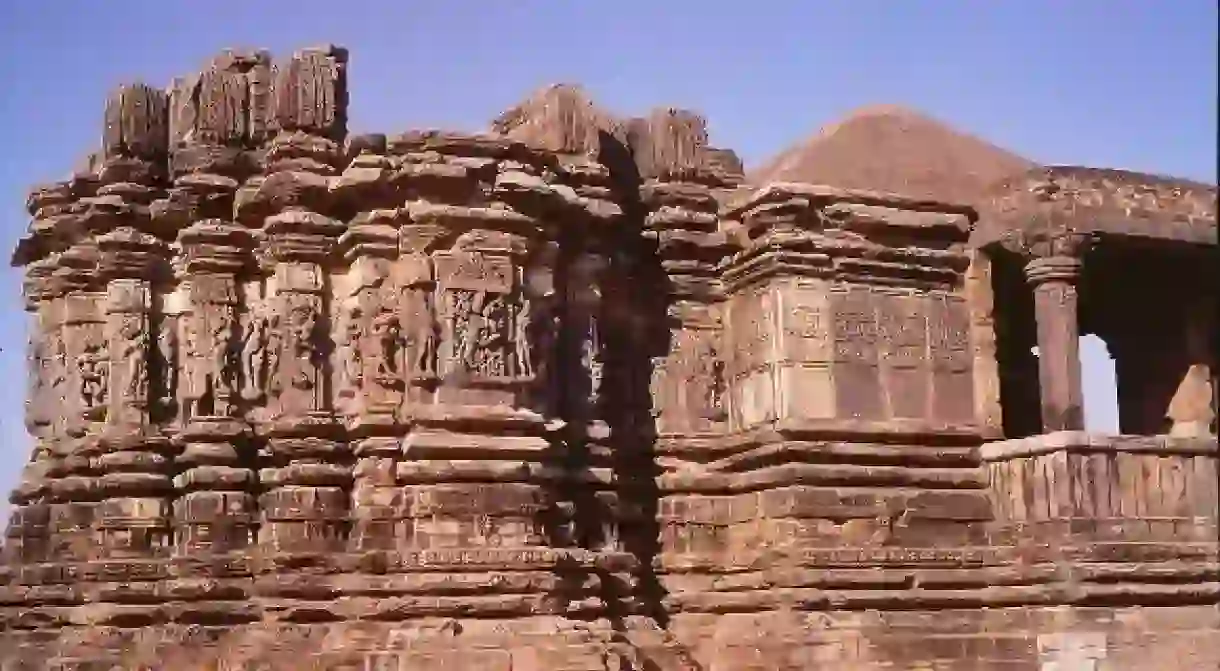Untouched India: Temples Of Arthuna

India’s cultural and historical heritage is fairly well documented. For centuries this has attracted people from around the globe to explore the same, more so in the last 100 years. Traveling has been a basic human activity undertaken for a variety of reasons. Improved means of communications-transportation has also increased tourist inflow towards India. The tourism literature has included almost all important destinations. But there are still many small unexplored areas in this country which needs attention of all those involved in tourism promotion. This piece is about one such place, which if promoted properly can become a hot tourist attraction.
Rajasthan state in the north west part of India is an important place for foreign as well as domestic tourists. The state is known for its history, culture, and diverse geography, fauna& flora which caters to the needs of tourists of every taste and every age group. Temple architecture is also one of the main components of cultural heritage. The southern-most part of the state, comprised of tribal districts of Banswara and Dungarpur, is also known in local traditions as the VAGAD area. Despite its current status as a backward tribal area, the region has lot to offer from a tourism point of view. Banswara is the district in which the village Arthuna is located, where you can find remnants and ruins of beautiful temples constructed between the 11th and 13th centuries by various rulers who controlled this area. Here, temple construction is not simple stone carvings, but it is sheer poetry in stones, and its description is beyond words.

History
In the 8th century A.D., Raja Upendra of Malwa established the Parmar dynasty. Later on, sub branches of this extended its reigns over Vagad, Chandrawati, Bhinmal, and the Kiradu areas of Rajputana. Raja Pundarik, one of the members of the Parmar dynasty, set up his capital at Arthuna, whose original name is Amrawati or Uthhunaka. He and his descendents started the constructions of many temples. An inscription of the Paramara prince Chamundaraja records that he built a temple of Shiva called Mandaleshwar, in honor of his father, in 1079 A.D. Another inscription of 1080 A.D. mentions that his officer’s son, named Anantapala, also founded a temple of Mahadev.

Location
Arthuna is now a well-developed village falling under the Garhi tehsil of the Banswara district in south Rajasthan. It is 55 kilometers southwest of Banswara, and 150 kilometers south of the famous city of lakes Udaipur. Arthuna is well connected by a tar road to Banswara and the Gujarat town of Santrampur. Udaipur is also the nearest airport. Ratlam, an important town, is 115 kilometers away from Arthuna. The ruins of the temples are spread around in a 1.5 square kilometer area in the south east direction from the village at a 1.5-2.0 kilometer distance.

The Temples
The temples are broken up into several complexes. Looking to the religious beliefs of different rulers, Arthuna temples are a mixture of Shivaism, Jainism, and Vaishnavites. In 1954, the Archaeological Survey of India started excavations here and brought out the existence of the following temple complexes.
Shiva temples: The most important and largest is the Mandleshwar Shiva temple, and as per inscription of 1080 A.D., it was constructed by Raja Chamundaraj in memory of his father, Raja Mandalik. This temple is completely protected and locals regularly visit this to offer prayers. Just near to this, there is the Arthuniya Hanuman temple, built by Raja Vijayraj in 1107 A.D. Someshwar Mahadev is also an important temple in this group. Here you can see stone carvings of Shiva Tandav, Andhak Vadh, and goddess Chamunda.

Jain temple complex: Built in the 12th century by the then rulers. Just near to this, there is another temple, Chusath Yogini, or Arthuniya Mahadev.
Hanuman Garhi: Since temples were built at different times, they were constructed in groups. There is one more distinct group known as the Hanuman Garhi complex; an important spot, as a place where a black stone statue of Lord Hanuman was found. A small temple of Neelkanth Mahadev is also part of this group.
Shivacharya temple: This is related to a saint of a tantrik sect, known as Kanphate Nath Yogis.
Kumbheshwar temple: This is dedicated to goddess Durga.
The general style of temple architecture at Arthuna is same as was prevalent in India at that time. Temples were built in Nagara style, which means that the base was an elevated square or rectangular platform on which the main body of the temple was set. The main gate was followed by a Garbha Griha. The top part was tapered with a metallic cover known as Kalash. The best time to visit Arthuna is between September and March, as the climates are reasonably sub-humid. As the surrounding area around Arthuna evolves, it has become a quaint retreat in a colorful village to grab some grub before or after visiting the temples.













